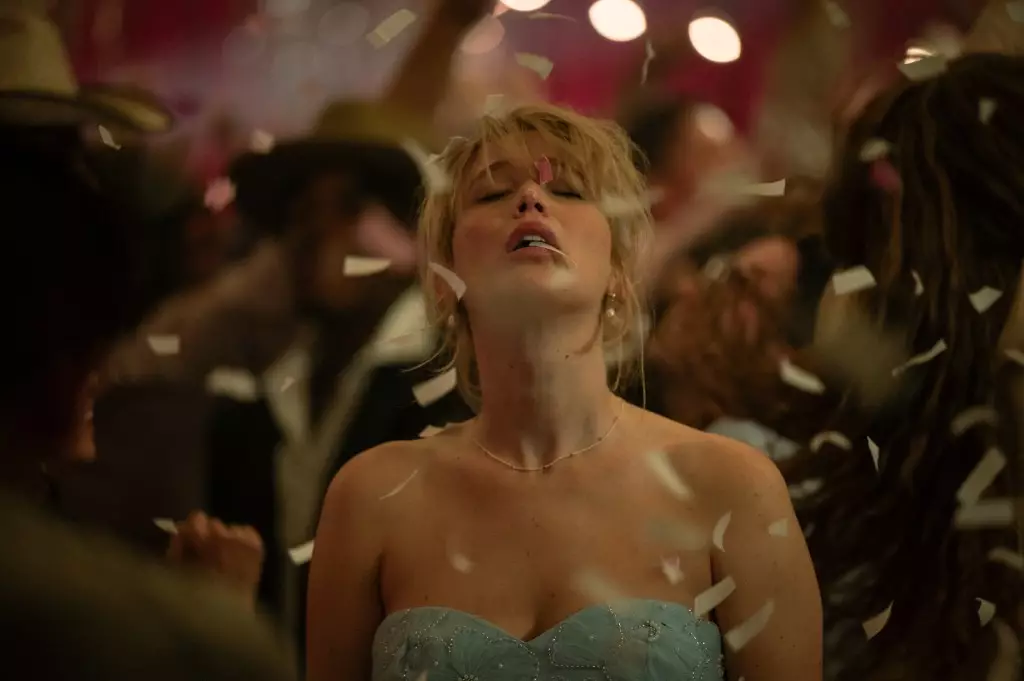The glamour of the Cannes Film Festival is an alluring spectacle that often masks the deeper narrative within the films it showcases. This year, the world premiere of “Die My Love,” directed by Lynne Ramsay and featuring heavyweights like Jennifer Lawrence and Robert Pattinson, did just that. The juxtaposition of red carpet brilliance against the dark themes of postpartum depression made the premiere not just another star-studded event, but a conversation starter about the complexities of mental health portrayal in cinema.
Jennifer Lawrence continues to be a differentiator in Hollywood, her career marked by an uncanny ability to embody roles that demand authenticity and emotional depth. Critics are already singing her praises, suggesting that her performance in “Die My Love” could lead to another Oscar nod. But while accolades and awards are the obsessive focus of the industry, one must ponder whether we are simply rewarding a performance that ultimately stems from a painful and often underexplored subject matter.
A Gripping Narrative Exploring Mental Health
“Die My Love” stands as a harrowing portrayal of a woman’s descent into madness triggered by postpartum depression. The narrative’s exploration of mental illness does not shy away from the uncomfortable truths of its harsh realities. Critics like Damon Wise have aptly described Ramsay’s creation as “brutal but beautiful,” which beautifully encapsulates the duality of a story that can both captivate and disconcert. The character of Grace, brought to life by Lawrence, embodies a kind of fragility further exacerbated by the betrayal of her husband, played by Pattinson. It’s a disheartening cycle, as infidelity complicates an already tumultuous state of mind—but this complexity mirrors the real narrative surrounding mental health that often goes overlooked.
Ramsay’s work often traverses the landscapes of discomfort, and it’s paramount that “Die My Love” does not serve merely as an awards vehicle for its lead actress. Critics assert that it veers closely into being a psychological examination rather than a straightforward drama. As also noted by The Guardian, the film’s essence lies in its mood rather than the milestone of plot development, inviting viewers into the labyrinthine corridors of Grace’s mind as she spirals into emotional chaos. The film’s seemingly uncharted territories present an opportunity for audiences to engage deeply, albeit uncomfortably, with the stigmas surrounding mental health.
Pattinson and Supporting Roles: A Unifying Tragedy
While Lawrence’s performance steals much of the limelight, it’s essential to consider the atmospheric contributions of the supporting cast, including some heavyweights like LaKeith Stanfield and Sissy Spacek. However, there remains a question: do their roles complement Lawrence’s narrative arc sufficiently, or do they flounder in their potential? Pattinson’s portrayal of an unfaithful husband is the embodiment of tragic irony—a representation of how external factors can compound a woman’s struggles.
Yet, in a world clamoring for elevation of women’s stories—as evidenced by the frequency and fervor of female-led narratives—it is essential that we don’t fall into the trap of tokenism or simplistic character sketches. The male characters must demonstrate complexity and substance if we are to see a true reflection of the human experience within the chaos of mental health dilemmas. It’s a crucial balance the film must navigate; the risks of overshadowing the primary story or falling into overused archetypes are ever-present.
The Critique of Artistic Choices
While the film has drawn plenty of acclaim, it hasn’t escaped criticism. For instance, Variety’s perspective asserts a more caustic view, interpreting the film’s inclination to “wallow in violent dysfunction” as a suggestive failing rather than a strength. This critique raises pertinent discussions about the ethical responsibilities filmmakers bear when tackling sensitive topics. Is it adequate for a film to suffer from the pitfall of sensationalism simply by virtue of artistic exploration? Are audiences ready for a constructive analysis versus one that merely serves to shock or provoke discomfort?
Though Ramsay’s direction is often praised, one must ask whether creators should seek to do more than provoke emotions; should they also be responsible for fostering a deeper understanding of mental health? The artistic, yet raw portrayal of such disquieting themes should ideally lead to meaningful discussions—a black-and-white interpretation of madness that accompanies bleak humor could disenfranchise what needs to be a more constructive discourse.
Ultimately, “Die My Love” promises something significant, shuttling audiences through labyrinths of despair while showcasing the extraordinary talent of its cast. However, it beckons us to interrogate not only the aesthetics of film but also the narratives we choose to glamorize in the name of art.


Leave a Reply